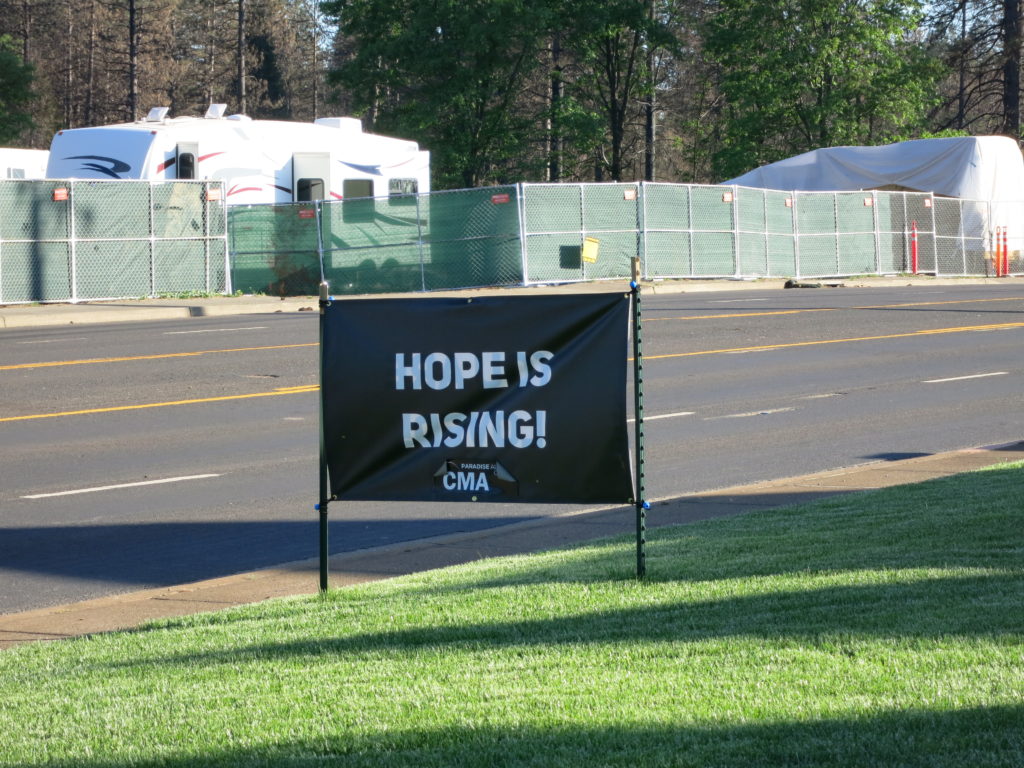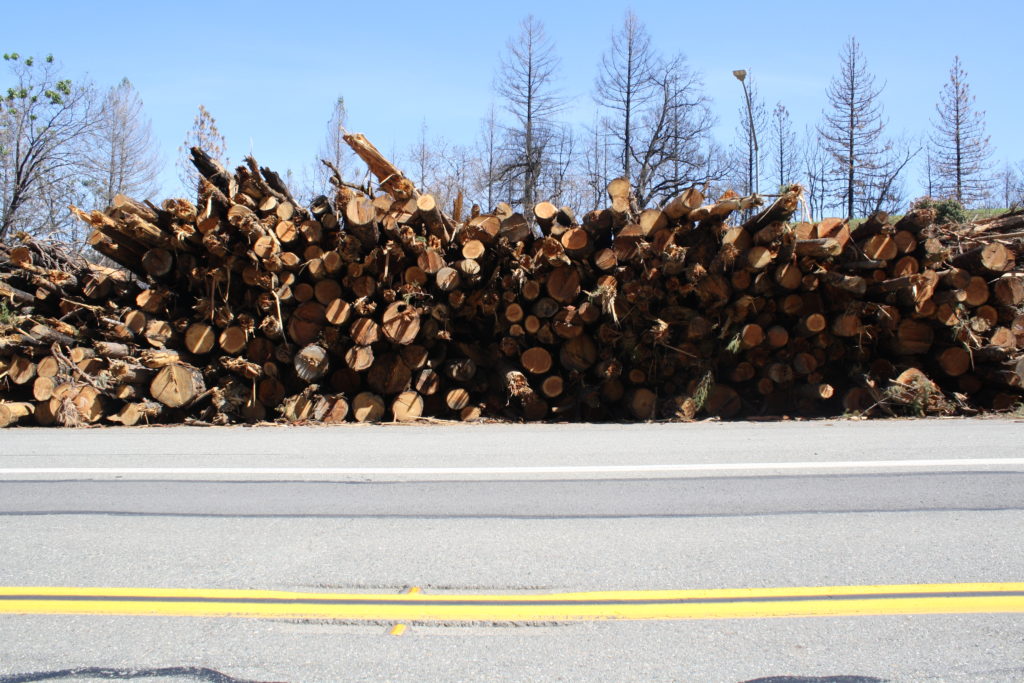After the Camp Fire, hundreds of researchers, students, relief groups, news cameras and individuals traveled to Chico, California to catch a momentary glimpse, to learn, to help, to hear stories and soak in the reality of the aftermath.
Megan Kurtz, who works for Cal State Chico, has become a liaison for the community, managing requests from students and universities, serving as both the first point of contact and a resource for academic groups.
She works to outline the ethics around coming to the site of a disaster to teach, research or learn. The fire has become a point of human interest and Kurtz works with campfire survivors as a servant leader, she is a board member on the Long-Term Recovery Group, and directly after the fire, she felt called to help.
“It felt like ‘your test is coming up’,” Kurtz explained to a team of captivated student journalists, who understood this metaphor all too well.

Towns procrastinated in preparing a real, effective plan, and now talks with Red Cross have helped to develop more standardized crises plans for the state of California.
“It is exhausting, emotionally exhausting for people to be asked to tell their stories again and again,” said Kurtz. “People begin to wonder, to feel like ‘am I just a story to you?”
As discussions began, Kurtz recalls realizing that Cal State Chico wasn’t at the table–she was there personally, but no one from Cal State was there to help and represent the community. So she thought, ‘okay how are we going to host this?’ and got started.
Wild Cats Rise, a university initiative in disaster relief, was born out of the fire, 310 faculty and staffs lost their homes, students lost their primary homes and there was displacement and unaccompanied youth.
Many of the members of Wild Cats Rise and Paradise Town Council lost everything too, the people responsible for recovery, in charge of it, were also in recovery themselves.

Currently, in Chico, there is less than a 2% housing vacancy, and hundreds of people have left the area, others found housing, Kurtz stated they currently have counted Campfire survivors are now in 49 of 50 states, a number calculated using forwarding addresses.
Kurtz said the morning of November 8 was weird, eerie almost, but not too far from the abnormalities of wildfire season. The sky was the biggest black sky she had ever seen, and she could see white smoke in the distance. She drove her daughter to school and showed up to lecture her freshman class of over 75 students, unconcerned as no fire had ever come close.
“You know something is wrong when at the end of the semester, in a large lecture, the room is full,” said Kurtz, nodding toward the professors in the room who smirked in solidarity. “I pulled up the map of the fire, telling students they were fine, showing them that it wouldn’t be coming near us, working to calm them down.”
Her 9:30 a.m. class was promptly interrupted when at 9:45 a.m. there was an emergency notification.
Her daughter’s teacher’s husband was a firefighter, and the children were out on a field trip. Cellphone towers burnt up, causing some people to never receive the initial notification.
Twenty minutes later, classes were dismissed by the Dean of Students, telling everyone to go back to their dorms, to pack. Cal State Chico was evacuating the residence halls, the Campfire was moving at the rate of one football field every minute. For the first time, a fire would jump highway 99, getting dangerously close to Chico and the university.
170 mph winds and flames scorched the Earth, fires in Pulga, Concow, Sterling City, Big Bend and Paradise all began to blaze. With two ways out of Paradise, traffic stood at a standstill forcing people to run on foot, to jump into rivers and ravines, to grab other neighbors, singed and injured by the fire and drive them to emergency facilities as able.
Fifty-thousand people were impacted, 400,000 trees need to be cut and removed, benzene in the water making it a likely three-year process before water is restored to the community, 3,000 residents displaced.
“People are tired,” said Kurtz. “They want to go home, and there is nowhere left to go. When you speak with people, end with something that is hopeful, collective depression is a real thing. Show kindness, spark hope–don’t force people to relive something they aren’t ready for.”
The rebuild is in full force, beginning with the clearing of plots and plans to lay fiber optic cables, integrate eco-consciousness into the design, and again be a place where people want to live, where they feel safe.
“I am excited to see what becomes of Paradise. It was beautiful and it will be again,” said Kurtz. “I hope that in seven or eight years, this is again a place where people want to come, where they want to raise their families, where they want to build a life.”